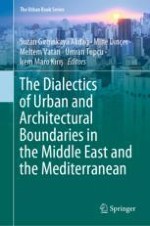2021 | OriginalPaper | Buchkapitel
9. Fading Boundaries: Insights on Learning “in Between” the Classroom Spaces
verfasst von : Yasemin Burcu Baloğlu, Sema Esen Soygeniş
Erschienen in: The Dialectics of Urban and Architectural Boundaries in the Middle East and the Mediterranean
Aktivieren Sie unsere intelligente Suche, um passende Fachinhalte oder Patente zu finden.
Wählen Sie Textabschnitte aus um mit Künstlicher Intelligenz passenden Patente zu finden. powered by
Markieren Sie Textabschnitte, um KI-gestützt weitere passende Inhalte zu finden. powered by
